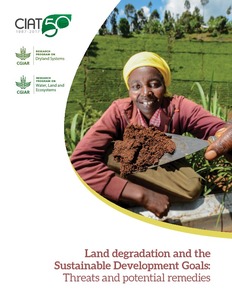Land degradation and the Sustainable Development Goals: Threats and potential remedies
Land comprises a range of biophysical components such as soil, water, flora, and fauna, embedded in a landscape shaped by its geomorphology and subjected to a climate that is often under different forms of human manipulation. Land provides natural habitats and serves many purposes â?? for agriculture, forestry, pastoralism, infrastructure development, mining, and tourism. Apart from these so-called economic uses, land provides a range of ecosystem services such as nutrient cycling, carbon sequestration, and water and air purification; it also fulfills social and spiritual needs. The natural attributes of land are generated over long-time spans. Soil formation takes place over decades to centuries (Mason et al., 2016). The flora and microfauna suited to the soil in the prevailing climate conditions will evolve with the soil conditions while playing a soil-forming function. Flora will go through evolutionary stages from pioneer to climax vegetation, which can vary depending on the climate, from sparse grassland and tundra to dense forests. Pioneer vegetation often involves plants that depend on synergistic microorganisms such as phosphatesolubilizing fungi and bacteria or nitrogen-fixing bacteria (Wubs et al., 2016). Land in its natural condition undergoes regular rejuvenation, as often fires occur that destroy vegetation, returning large quantities of carbon, nitrogen and sulfur to the atmosphere, after which pioneer species appear to recapture them (Gehring et al., 2005; Kugbe et al., 2012)

